Continued from: Muscat City Tour – Part I
Mutrah Souq
We drove to the harbor area where the Sultan’s pair of matching cruise ships, or mega yachts, or whatever you would call them were moored. They were sand-colored just like the rest of the surroundings. The scenery was still a bit baffling to me. On the one hand, you had miles and miles of desolate, scorched earth, and then suddenly popping up out of nowhere, you’d see some crazy display of opulence. It worked to our advantage on the water, because out of the 40 miles of coastline we covered, there was really only one other dive boat in the area that shared the dive sites with us. We were used to being the only sign of activity for miles and miles around. To suddenly go from seeing no other boats, to massive yachts (or small cruise ships; I’m really not sure how you would classify them,) was a bit like driving an hour through the desert and then turning up at a large, Westernized shopping mall. Oh wait, we did that too…

Across the street, practically hidden between the outer shops, under a large staircase, was the entrance to the Mutrah Souq, the traditional Arab market. Its name translates to mean “dark market,” because the alleyways are covered, which made the labyrinths of shops very dark back in the day before electricity, when shoppers would have to find their way by candlelight.

If you ever wondered where you might find a magic lamp like the one from Aladdin, the souq would be a good place to search. Many of the shops had normal everyday stuff, from plastic storage containers to pots and pans. Many of the shops offered cashmere and pashmina scarves, some sold the embroidered, traditional men’s caps. My favorite shops though, were the trinket shops, so jam packed with every odd and end you could have spent an entire day browsing through just one of the living room-sized shops. There we found barrels of replica old coins, shelves lined with old telescopes, microscopes, binoculars, compasses; padlocks in every shape and size with interesting engravings on them. Hanging from the ceiling were suits of armor, old rifles, shark jawbones, blowfish, incense burners, I was even saddened to see a preserved hawksbill turtle.



One of the guests picked up a shiny and ornate lamp and rubbed it to see if a genie might emerge. “No,” Stefan said, “you have to go for the dull ones.”

I couldn’t find any information on just how far back the souq dates, at least a far back as the times of sailors trading spices from far and distant lands. It is rumored to be the oldest market in the Arab world. Some of the relics in the shops definitely felt as though they had been collecting there since the beginning of time, gathering dust as time pushed them to the back of the shelves with each newer and shinier trinket put on display.
One might also compare the shops to a dragon’s den: dark corners full of treasures, hoarded from years of pillaging distance places. (Pillaged by the dragons that is, I’m not suggesting the Omani’s acquired their goods in any sketchy fashion.)
We stopped for a coffee, and I was hoping it might be the traditional, cardamon-spiced, Omani coffee I kept hearing so much about. But the little Dixie-sized cup turned out to be nothing more than normal, bitter, black liquid.
Mutrah Fort
When everyone had shopped to their heart’s content (which wasn’t much at all; I was really hoping that one of the European guests would walk up carrying some monstrosity of a trinket, but they were far too practical of a group to offer any entertainment), we left the souq. We walked down the block a little ways, down some quiet, sandy alleyways, and eventually started climbing a hill. The sandy path eventually led to stairs, and up and up we climbed, a much more difficult feat than it should have been given the scorching heat. We eventually emerged at a fort, built in 1507.



Little to no information was available on the fort, except for that given on a plaque at the entrance:
Muttrah Fort is located on a mountain ridge overlooking both the city and the bay of Muttrah. With its towers and ramparts, it was in an ideal position to protect Muttrah from attacks from both the sea and inland. Originally an Omani fort said to have been built in the year 913AH/1507AD, the Portuguese later added two towers and a curtain wall. During the latter part of the 18th century the fort underwent further development and enhancement under the AL Busaidi dynasty when the curtain walls were doubled and further towers added. Muttrah Fort was restored by the Ministry of Heritage and Culture in 1980.
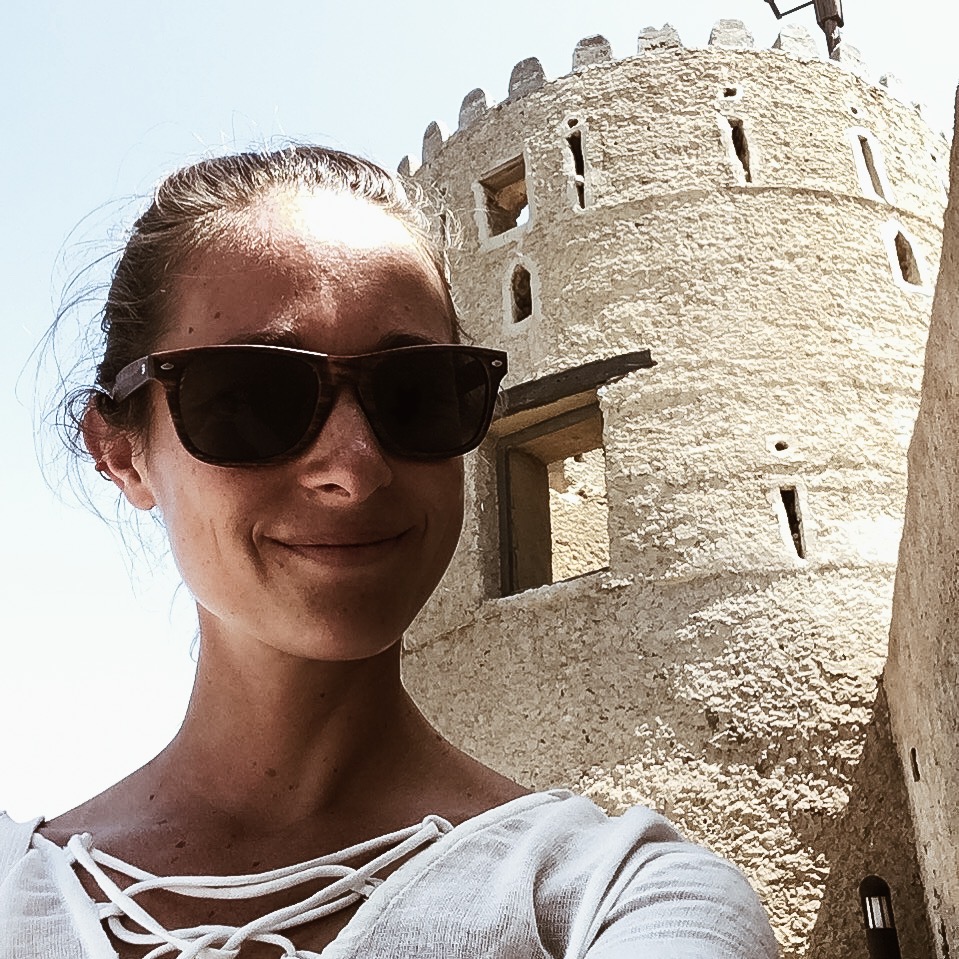

While the history was vague, the view from the top was mesmerizing, and offered a 360 degree view of everything Oman had to offer: the murky ocean bringing livelihood for fishermen, the hazy desert landscape, the monochrome city providing the structure for the society, and the matching mega yachts/cruise ships representing the Sultan’s vast wealth.


Coffee & Dates
Back in the van, our driver, Sa’id, surprised us with a spread of coffee and dates. One of the German ladies had asked earlier where we might try the traditional coffee, given that women weren’t allowed into the coffee shops. He hadn’t had an answer for that question at first. In our absence though, he had gone to his mom’s house and made us some coffee and brought us some dates. The gesture was incredibly kind and hospitable. I was delighted, as experiencing new places through food and beverage is something I find to be essential when traveling. So far we had been cooking all of our own food.

Sa’id passed around some delicate teacups, about the volume of a double shot glass and without any handles. The coffee was everything I hoped it would be: extremely flavorful from all the spices, and without any sugar added to overwhelm the flavors of the spices. The sweet instead come from eating the dates. Sa’id had brought two different varieties for us to sample: freshly ripe ones, and dried dates. To call them “dried” seems misleading. Nothing is added to the dates, and they don’t go through any sort of processing, but over time they become gooey, rich, and almost like caramel. The longer you leave them, the gooier they become. There must be a better word for that than “dried date.” There probably is one in Arabic.
I had discovered the dried dates at the grocery store, as they were sold in bulk, packaged, in fancy gift boxes, in sweets, basically in every form imaginable. They made the best snacks, especially for a post-dive, quick sugar boost while trying to muster up the energy to set about cooking lunch. Having them grown locally, I became a very big fan.
The fresh dates were new to me, and apparently the season for when they grow was just ending. They left my mouth with a slightly fuzzy feeling, similar to eating a persimmon that isn’t quite ripe yet, but not nearly as unpleasant. Have you ever tried an unripe persimmon? Apparently there are two varieties, one that gives your mouth the fuzzies, and one that doesn’t. I happened upon the fuzzy variety unknowingly once, a while back, and it was miserable. Imagine the sticky, immobile sensation from a mouthful of too much peanut butter, but way way worse. I have nightmares about that sensation.
The Incense Burner Art Piece
As we drove down the road to our next stop, an interesting tower commanded our attention from its place atop a hill. I asked what it was and the answer I received was an “art installation.” Sa’id silently turned the car around and pulled over in a parking lot where we could step out to view it. It was modeled after the local incense burners, and ironically, when I searched for more information about it online, the most I could find was from a print sold by Walmart, which says that the tower was built to celebrate Oman’s 20th National Day.

Al Alam Palace
Our last stop for the day was Al Alam Palace, which was as eerily quiet and deserted as our resort. The palace was one of six royal residences of Sultan Qaboos. This one he used primarily to host guests, and it was evident that he was not currently playing host.






The palace itself was gated off, and a few security guards did roam the grounds. We were allowed to go right up to the gate and take photographs, though all of us were hesitant to get too close.


The palace was the only colorful building I had seen, and looked like blue and gold golf tees holding up a white platform. I didn’t even notice the golf tees until looking at my photos later on, but now I can’t seem to unsee them.

And so ended our city tour. My favorite photo from the day was this one I captured on the car ride back to Sifah of this cat living the high life.

That is all I have for you regarding the culture of Oman. The rest of my time was spent in Sifah and out scuba diving. Next time we’ll get back to the underwater world, and I’ll tell you all about my encounter with the big red octopus!



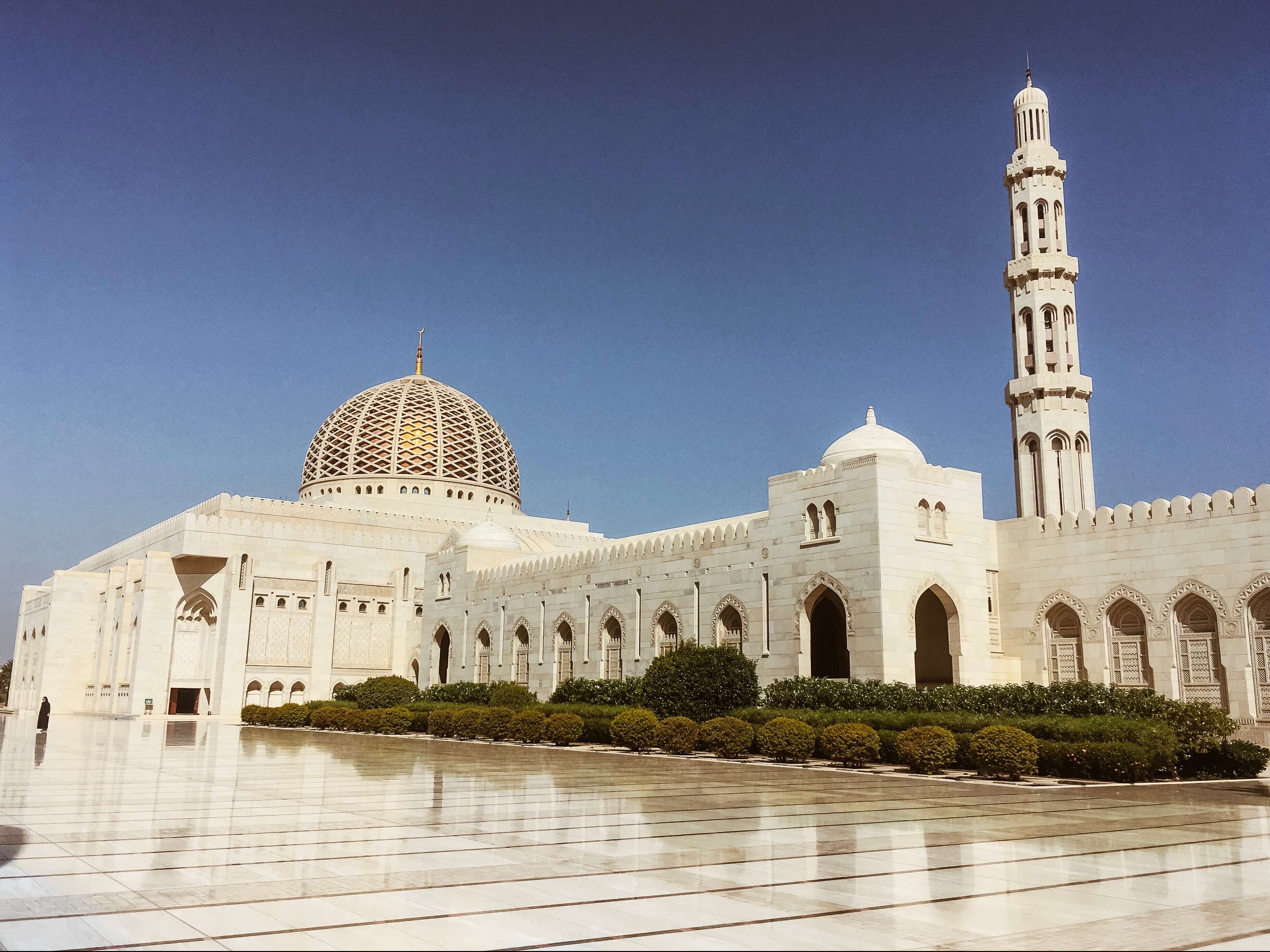
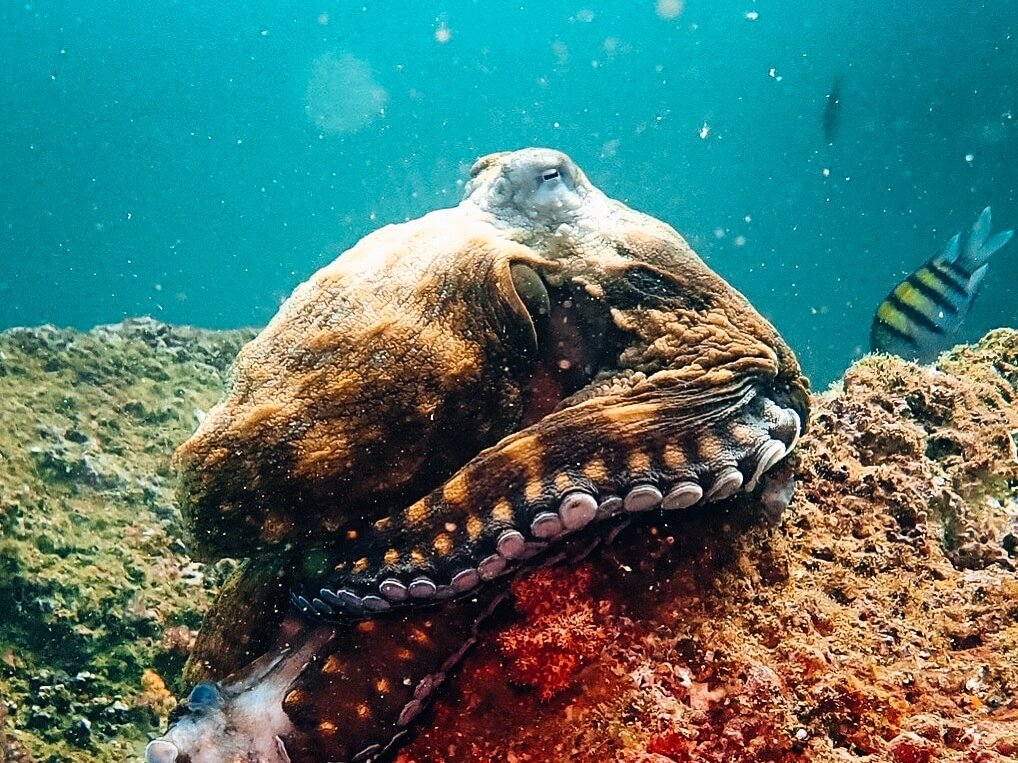

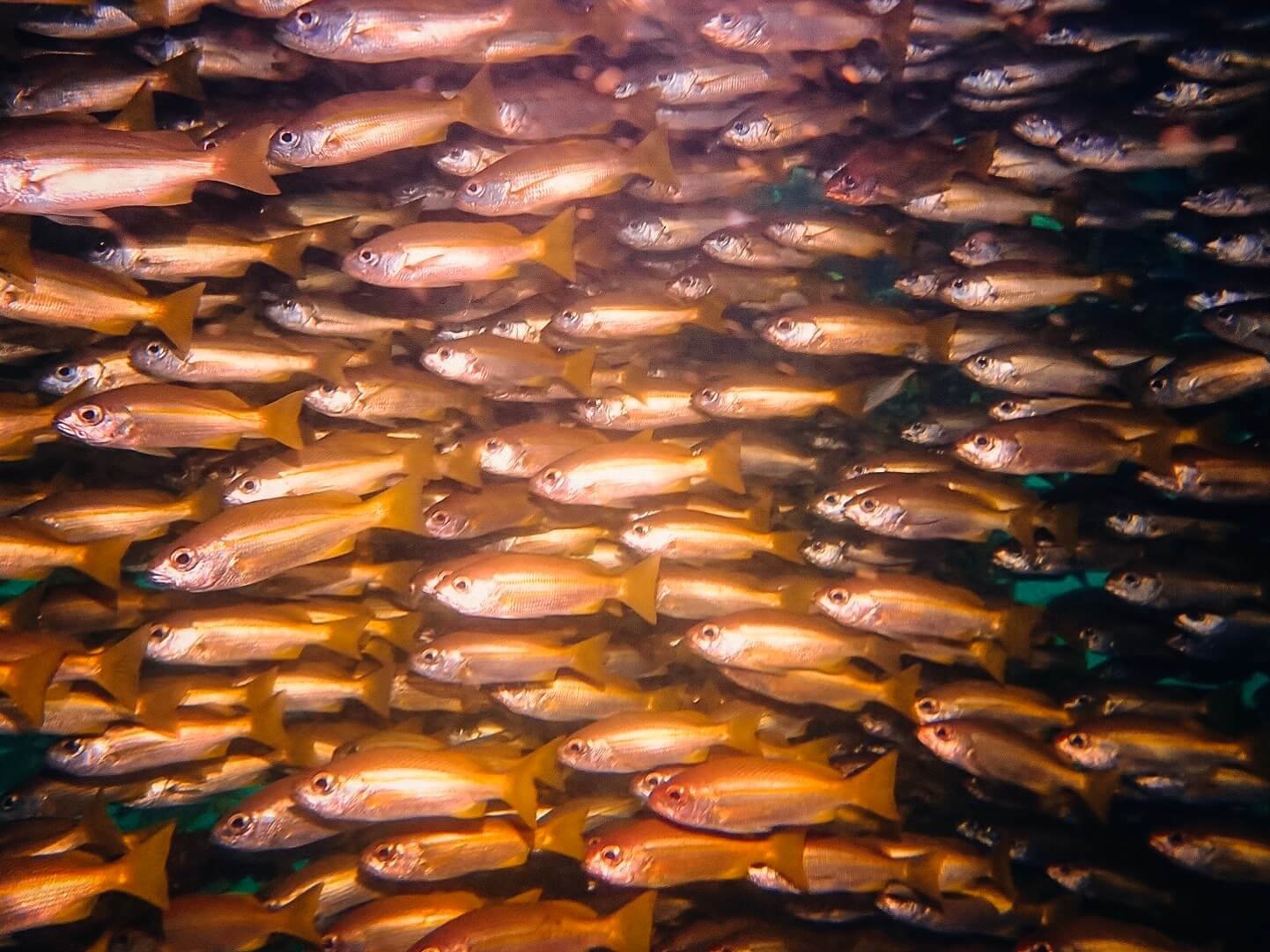
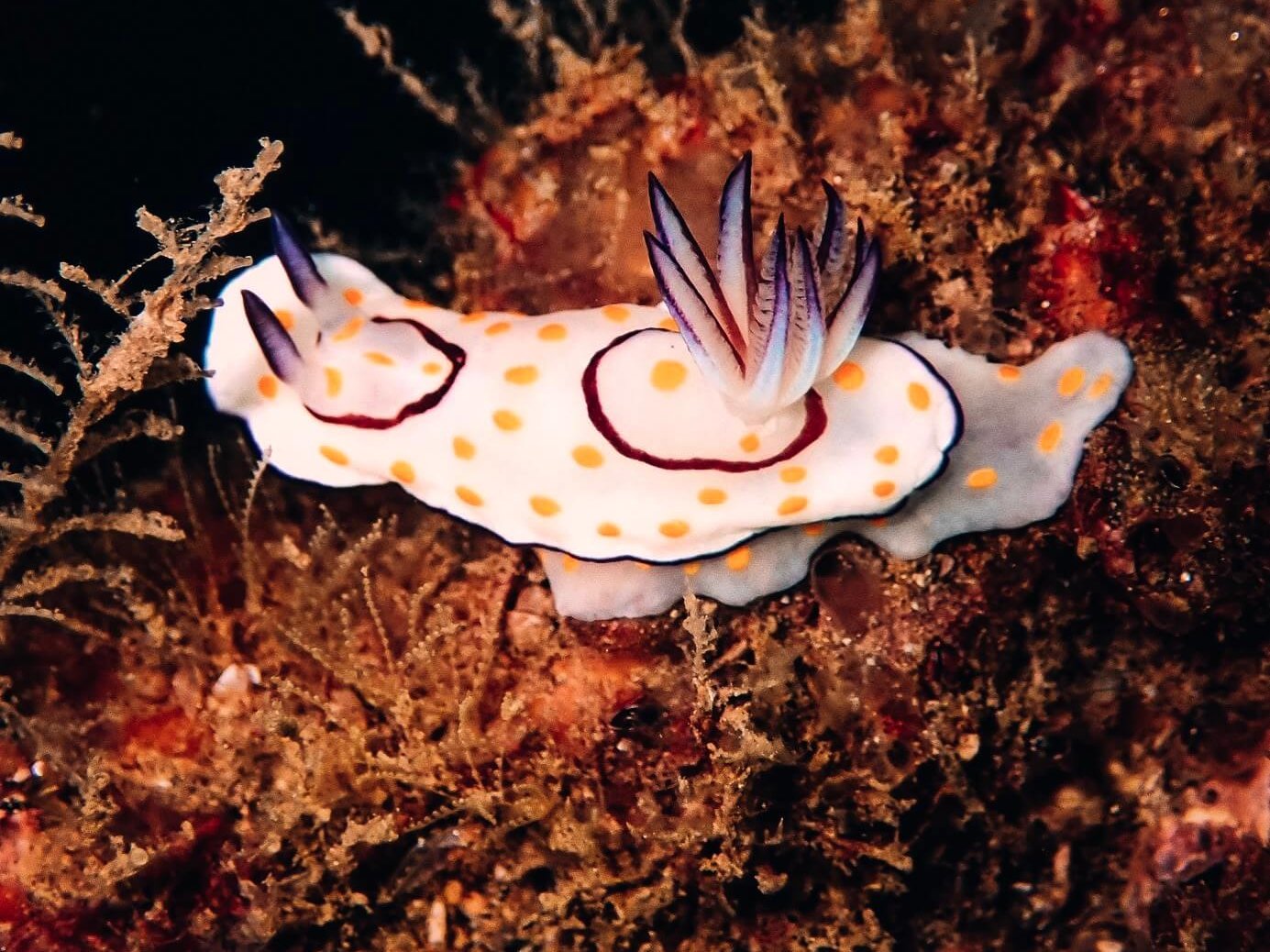
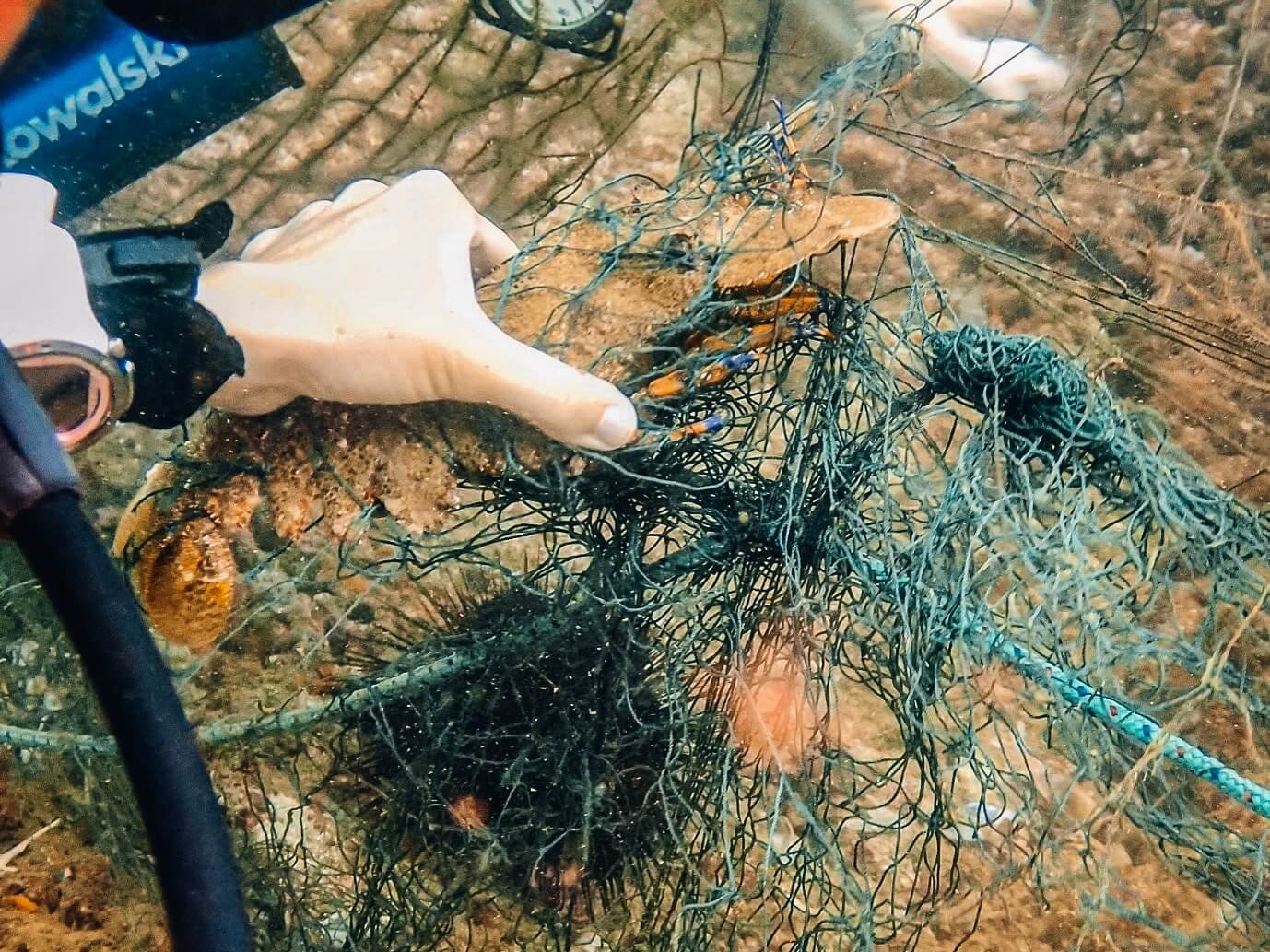
Shirley
Love this, thanks Lexi!
Lexi
My pleasure! Thanks for reading!